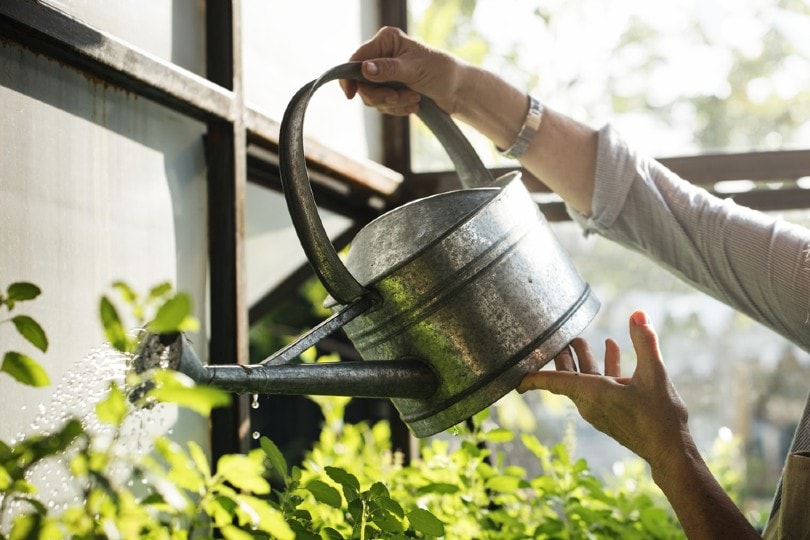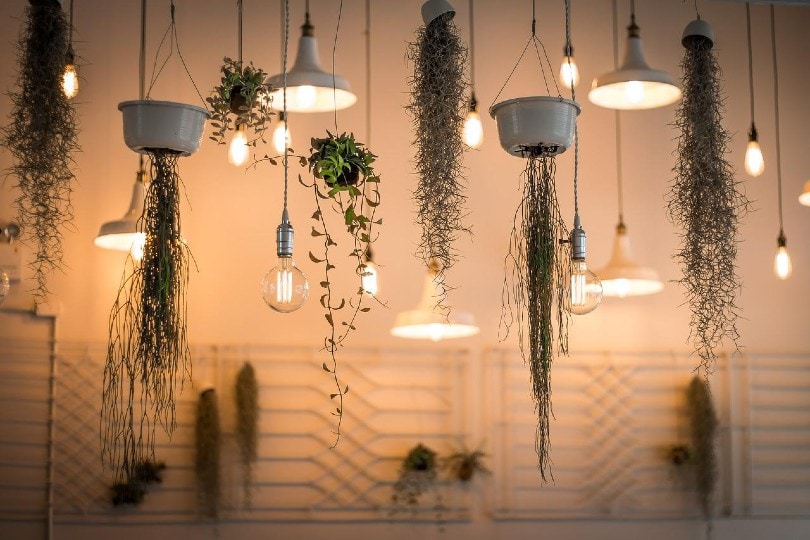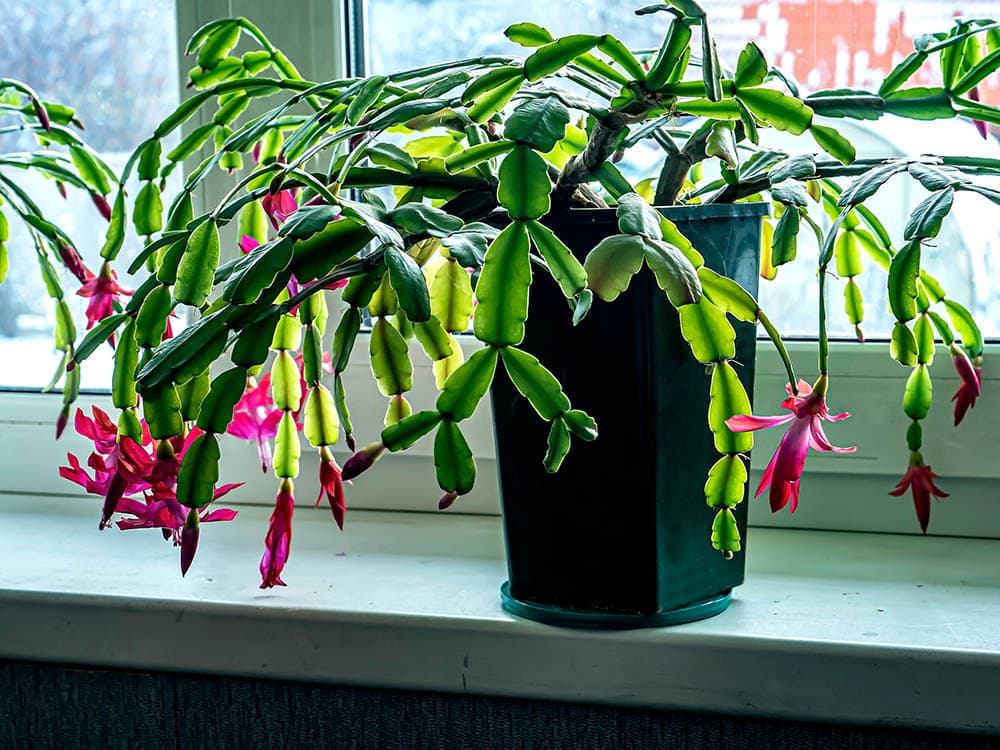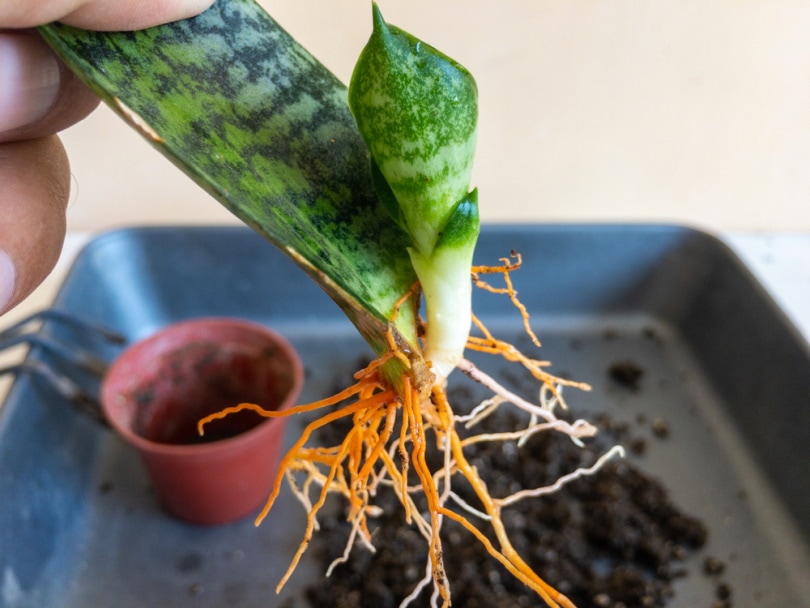Drooping Houseplants: 8 Reasons & Fixes
-
Lindsey Lawson
- Last updated:

If you have noticed your houseplants have begun drooping and starting to wilt, it’s time to take action because this is a surefire sign that something isn’t right. Before you can solve the problem, you need to figure out what it is that’s causing this to happen.
Fixing the wrong issue could cause more harm than good, so we’re here to help you take a detailed look at the reasons why your houseplants may be drooping and how to fix them so that you can restore their health and vibrance.
The 8 Reasons Why Houseplants Droop
1. Overwatering or Underwatering
Different plant species will require different care in terms of watering. If you were to overwater or underwater your houseplants, you may notice them start to droop and wilt, which is a telltale sign that it is unhealthy and needs intervention.
An underwatered houseplant will begin to droop due to the lack of moisture needed to absorb the nutrients from the soil, which is vital for survival. Excess water can deprive the roots of oxygen and they will begin to rot, causing drooping in the stems and leaves.

- Know your specific plant’s watering requirements and care for it accordingly. If your plant is drooping and the soil is dry, provide an adequate amount of water to help bring it back to a healthy state.
- If you have overwatered your plant, this means the soil is not draining well enough, and you should ensure the plant is in a pot that has adequate drainage. If root rot is present, you may need to remove the plant and treat the root rot to help it survive.
- Make sure you thoroughly research your plant species and place them in an appropriately sized pot with proper drainage and water according to the plant’s needs. This can prevent over or underwatering from happening in the first place and allows your plant the best chance of survival.
2. Damage to the Plant
Your houseplant could have suffered damage, which can easily cause it to begin drooping. If you notice a certain portion of the plant is drooping but the rest of it looks normal and healthy, there may have been some sort of damage done to a stem. It could have been bent too far accidentally, causing the stem to be unable to support itself.
- Damage to a small area of the plant is typically an easy fix, thankfully. You can try supporting the damaged stem by using an object to help prop it up in hopes it can recover. If it is damaged beyond repair, you should consider trimming off the broken stem so the plant can continue to grow and flourish.
3. Incorrect Lighting
Houseplants come from all over the world and thrive in a wide range of climates and conditions. If you are not providing a particular species with the lighting it requires, you may notice the leaves beginning to droop due to a decline in their overall health.
If a houseplant is receiving too much light, the chlorophyll and carotenoids will absorb more energy than necessary and pull moisture from the leaves, causing both the plant and the soil to dehydrate.
Lack of proper light will result in decreased production of chlorophyll, which is what gives plants their green color and carotenoid. This results in drooping, dullness, or a change in color from green to yellow or brown, and a lack of flowering in certain species.

- If it has been determined that your plant is not receiving the proper lighting, you need to change up its care and place it correctly within your home to ensure it is getting the correct amount of light each day.
- For those that thrive in low light conditions, move them away from areas in the home that get a lot of sunlight. If the plant requires lots of sunlight, move it to a window that receives ample sunlight. The key here is researching the species and caring for them according to their lighting needs.
4. Too Much or Too Little Nutrients
When a plant starts severely lacking in nutrients, it will likely begin to droop and lose its luster. If it is not getting enough nutrients, the growth may be stunted, and it could result in poor flowering in certain species.
On the other hand, too much fertilization in the soil has the potential to cause problems, too. Different species of plants have varying soil requirements. Since they pull their nutrients directly from the soil, it makes sense that their health will deteriorate when they are not getting what they need.
- The key to this problem is finding balance and making sure you understand the proper care requirements for the species you own. If you know what kind of soil they need to thrive, you can easily identify the root cause of your drooping issue.
- If your plant is potted with incorrect soil, it is time to replace the soil with its needed variety. Because salt and mineral buildup can happen with tap water or purified water, it’s a good idea to use distilled or filtered water to prevent this from happening as a result of regular watering.
5. Temperature or Humidity Issues
Depending on where your houseplant is from, you will need to best imitate its natural environment in terms of temperature and humidity. If you do not, the plant’s health will go downhill, and you will likely observe issues such as drooping.
Thankfully, most houseplants do well in temperatures ranging from 65 and 80 degrees Fahrenheit, which is the typical temperature range of most households.
Humidity is another concern and a common cause of drooping. Depending on your plant’s region, they may require some additional mist to keep the humidity level where they need it, otherwise, things can go wrong.

- Solving this problem starts with learning the natural temperature and humidity needs of the plant in question. Once you figure that out, it can help you determine what you need to do to fix the problem.
- If your home is of reasonable temperature, you may need to move your plant out of the way of the vents to prevent drafts, or even away from the windows to keep them from heating up too much.
- If humidity is a concern, that means there is either too much or too little moisture in the air. If there is a lack of humidity, consider misting the area around your plant or even getting a humidifier for the room.
6. Pests or Disease
Unfortunately, houseplants are susceptible to pests and disease. Pets such as aphids and spider mites are a common problem among household pests and will severely affect your plant’s health if left untreated.
Thankfully, the disease isn’t as common in houseplants due to the environment not being as favorable but that does not mean they cannot be afflicted. It’s a good idea to know what kinds of diseases are most common so they can be identified and treated.
Aphids and spider mites will suck the nutrients right out of the plants, causing them to eventually droop and fade in coloration. Aphids look like small grains of rice and appear on the ends of stems, while spider mites create hair-like webs underneath the plants and are barely visible to the human eye.
- Both of these pests can be controlled with organic houseplant insecticides. If you notice signs of disease in your houseplants, try and identify the disease to the best of your ability. You can attempt cutting out the rot if it is in an area that can withstand it but it is not uncommon to lose plants to disease.
- Avoid overcrowding your houseplants so that if one were to be infected, it would not easily transmit to the others. Isolate any plants that are showing any signs of pests or disease as you handle the problem.
7. Transplant Shock
Most green thumbs have heard of transplant shock, which happens when there is a sudden change in the plant’s environment through uprooting and repotting. The signs of distress will become visible through drooping and even fading of coloration.
The length of time a plant experiences transplant shock will depend on the soil and new environment, as well as the handling during the transplant process. The longer a plant remains in shock, the more likely it is to die.

- To help fix transplant shock, avoid moving the plant further and maintain the proper moisture of the soil. You may even prune your plant and use sugar water to help it recover. Avoid using any fertilizer, as you do not want to stress the plant out further. Be patient, as it can take weeks for some smaller varieties to recover and months for some larger plants
8. Dusty Leaves
Another reason your plant may be drooping is due to dust accumulation on the leaves. Certain houseplants have a texture that causes dust to build up, which results in the plant having difficulty regulating moisture.
The dust blocks the light from penetrating the plant’s surface, thus decreasing photosynthesis. Depending on the type of plant, this can either increase or decrease transpiration, both of which can lead to drooping.
- To solve this issue and prevent it from happening again, simply clean your plant leaves regularly. A damp cloth will do the trick, but you can also use plant-specific cleaning wipes if you prefer. Dry microfiber cloths and dusters work just fine, too, as long as the dust is not thick enough to warrant a wet wipe.
Conclusion
As you can see, there are many reasons why your houseplant has begun drooping. This is concerning and a telltale sign that something is not quite right with your plant. Narrowing down the cause is important so that you can restore your plant’s health. Thankfully, most of these issues can be fixed easily. Always be aware of the specific care requirements of each species of houseplant you own.
Featured Image Credit: R Coates, Shutterstock
Contents

